AARP Hearing Center


A comprehensive spring house cleaning can feel a bit overwhelming, but focusing on one room at a time can help spread the workload over a few weeks. This room-by-room guide offers tips and tricks for efficient cleaning, plus details on how often you really need to clean specific items. We also share recommended cleaning agents (including many that are DIY and natural) and note ways to swap out toxic substances. And we provide advice on modern-day conveniences, like HEPA filters and electronics, so that you can keep these investments in tip-top shape.
SAFETY FIRST
1. Don’t mix chemicals
Resist the urge to combine multiple cleaning products, as it could create toxic fumes or chemical burns. Never mix bleach and vinegar, bleach and ammonia, hydrogen peroxide and vinegar, drain cleaner and bleach, bleach and rubbing alcohol, or toilet bowl cleaner and bleach. And while combining baking soda and vinegar isn’t toxic, it actually decreases the effectiveness of each component.

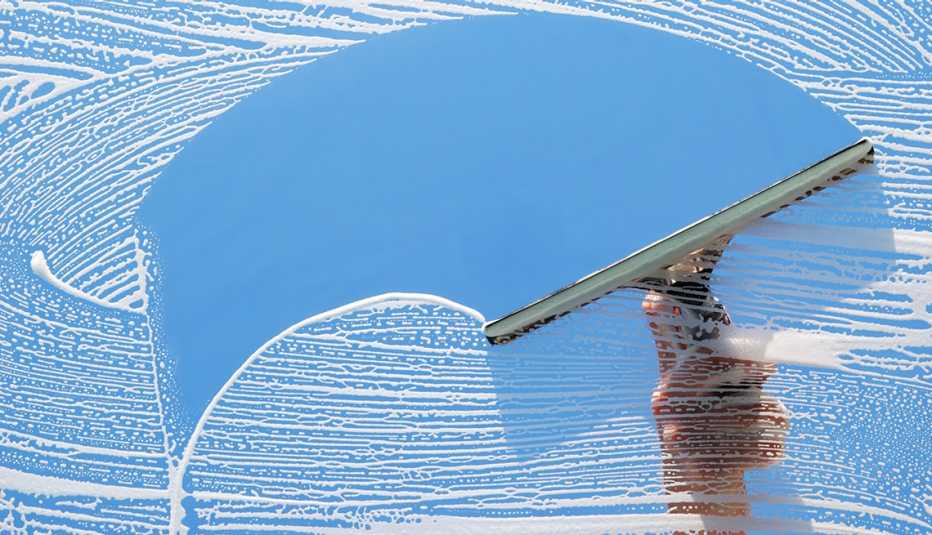
START OUTSIDE
2. Get squeaky-clean windows
Use a vacuum attachment to remove dust and debris from sills and tracks. Then clean with equal parts warm water and vinegar (plus a dash of dish soap if they are really dirty). “Use a squeegee, microfiber cloth or sponge to clean the windows,” says Val Oliveira, CEO of Val’s Services Cleaning in the Chicagoland area. Remove excess water with a squeegee or paper towels. If your windows are out of reach, use a window cleaning pole kit (typically under $50) or consider hiring someone to do the job for you. Remove screens and use a scrub brush with soap and water to clean, then rinse in the sink, tub or outside. Let them dry completely before putting them back in the windows.
3. Clean outdoor light fixtures
Over time, porch and walkway lighting fixtures can accumulate dirt, leaves and bugs. Kathy Cohoon, operations manager at the professional home cleaning service Two Maids, in Pensacola, Florida, says it's important to first ensure the power is turned off before cleaning anything electrical. Next, remove any debris, and then wipe the glass with a damp cloth using a mixture of dish soap and water. If you’ve noticed the bulbs have dimmed over time, consider replacing them for maximum brightness.
4. Clean exterior mats
If your exterior mats are in good shape, a good cleaning will get them looking almost brand new. Coir (all-natural fiber made from coconut husk) mats can be vacuumed and rubber mats can be scrubbed clean. Make sure they’ll stay put and throw away old or worn exterior rugs or mats, and replace them with sturdy ones with a good backing so they don’t move and you can prevent falls. To make coir outdoor rugs and mats fade-resistant, spray with a can of clear polyurethane, which you can purchase online or at hardware and big-box stores. This will create a seal to protect them from weather and wear and tear. Wait for the mat or rug to dry fully before walking on it.
5. Clean outdoor rugs
Always check tags first for washing instructions. Typically, small rugs can be cleaned in the washing machine, says Cincinnati-based Jill Koch, owner of Jill Comes Clean. “If they are too large for the wash, hose them off. You can drizzle some soap on top — just a little — then scrub with a large scrub brush, hose off and let them sit out to dry.” Use a large squeegee to push off excess water.
6. Wash your front door, threshold and door frame
Your front door is the first thing that you and your guests see when arriving at your home, and yet it is often completely overlooked when cleaning, says Logan Taylor, founder of Dazzle Cleaning Company, in Seattle. Fill a bucket with half a gallon of warm water and two tablespoons of dish soap. With a cleaning cloth, wash both sides of your door, the door frame, the threshold, and any ledges that may be above the door.
7. Wipe down outdoor furniture
Use a soft brush or nonabrasive cloth to remove dirt, cobwebs and debris. For metal or wood furniture, use hot soapy water followed by a rinse, suggests Koch. For fabric and pillows, check the tag for recommended instructions: It will say W, S, WS, WASH or X. W stands for Wet, and means you can clean with a water-based cleaner or fabric steam cleaner. An S stands for solvent and means it is dry-clean only. WS stands for Wet and Solvent, meaning either use a water-based cleaner or dry-clean — it’s best to figure out what the stains are and choose your cleaner based on that. WASH typically means you can wash the item in the washer with cold water on a delicate cycle, then air-dry or tumble low. And X means vacuum only.
8. Power/pressure wash concrete and decks
Pressure washing is a great way to quickly remove dirt and debris, but without proper training, you can damage loose brick and older wood. There’s also a risk of injury, as the pressure can kick up pebbles and dirt, so you’ll need the proper protective gear, too. It may be wise to hire a professional to handle this job. As for the concrete around your property (like a sidewalk or driveway), use a power washer with a psi of 3,000 or more. You can buy or rent one: They typically run at least a few hundred dollars to purchase or to rent for multiple days. Make short passes with the wand, and start on the highest ground and work your way down, so you aren’t pushing dirty water onto a freshly washed surface. Once the surface is clean and dry, add abrasive strips, like cost-effective grit treads and tape, to help improve traction in wet conditions. For a permanent and safer solution, consider installing nonslip stair treads. Alternatively, look for nonslip deck paint, which features more texture for extra traction.
9. Inspect the roof and gutters
If you’re nimble enough and your roof’s pitch isn’t drastic, you can remove debris in your gutters, drains and downspouts by hand or with a leaf blower, then flush with a garden hose to remove smaller debris. Consider installing a hooded system that stops debris from accumulating. Check on the state of your roof while you’re up there — if any shingles look broken or cracked or are missing, contact a few roofing contractors to get estimates. If this task is too dangerous for you, hire someone to do it for you.
10. Check your solar panels
If you have solar panels, unplug them and check the manufacturer’s recommendations for cleaning them. Typically, they can be cleaned just as you’d clean glass — using water with a little dish soap, along with a soft sponge or cloth. Be sure to also inspect them to ensure they are free from damage, cracks and animal nests.
11. Clean your grill the right way
Stop using the metal bristle brush on your grill. Those nearly invisible small metal pieces can break off and make their way into your food and body, causing harm. Instead, use a coil brush or crumpled aluminum foil.


GARAGE
12. Declutter first
Start by emptying all the garage contents into the driveway or yard so you have a clean slate to work with. Sweep out leaves and debris, and wipe down cabinets or shelving. Make three piles: “donation,” “trash” and “keep.” Purchase organizational solutions to keep things tidy. Reorganize your items as you place them back in the garage, so that similar items are grouped together and the things you use most are the most easily accessible.
13. Dispose of old paint and chemicals
Household hazardous waste — such as paint, batteries, and lawn and automotive chemicals — can’t be placed in trash or recycling containers for safety reasons. Check with your local environmental, health or waste agency for drop-off locations or special pickup days for these items. Your local auto parts, home improvement or battery stores may also accept and properly dispose of these items.
14. Clean the garage floor
Due to gaps under garage doors and openings around windows, Cohoon says, garages can be an entry point for mice, so it’s important to clean the floor on a regular basis. Sweep away loose debris and then use a pressure washer to remove oil stains and grime.
15. Declutter and clean your vehicles
Your car’s interior can also become cluttered and dirty, so Cheryl Nelson, founder and owner of PrepareWithCher.com, which offers preparedness and national disaster advice, says to start by decluttering your glove box, storage compartments and the areas under your seats and your trunk. Dust the inside of your vehicle, including the dashboard, with a microfiber duster. Use a small handheld vacuum on the floors, mats, seats and small crevices. Clean the inside and outside of your windshield with glass cleaner. While you're at it, she says to make sure your vehicle has an emergency kit and first aid kit.
16. Clean and organize tool cabinets
It’s easy for tool cabinets to become disorganized and accumulate dirt. It’s likely that you’ll be using these tools more often in the warmer months, says Cohoon, so give yourself a nice reset by emptying the cabinets and wiping down these surfaces with a damp cloth. Once clean, try grouping tools by type and utilizing drawer organizers to prevent tools from getting misplaced.

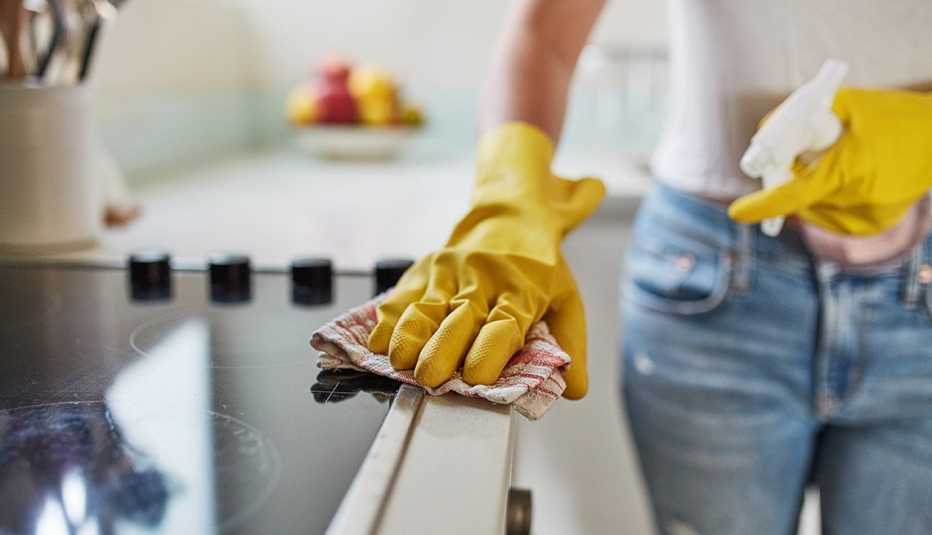
KITCHEN
17. Brighten up your pots and pans
Clean any scorched pots and pans with products made for stainless steel, aluminum and ceramic. Oliveira recommends The Pink Stuff and says to let the cleaner sit on the pot for a bit, then scrub with a sponge before rinsing. You can also try Bon Ami or Bar Keeper’s Friend, making a paste with water and letting it sit in the sink.
18. Disinfect the sink
While you should clean your sink after each meal prep, it’s important to disinfect the bottom and sides once or twice a week to prevent bacteria growth. According to the National Science Foundation, the kitchen sink is the second-germiest spot in your kitchen (first place goes to your sponge). The organization recommends using 1 tablespoon of bleach mixed into 1 gallon of water. If you have a garbage disposal, run it with hot water and add lemon slices to help clean the cavity and give off a fresh, citrusy aroma. Disinfect your sponge by soaking it in full-strength vinegar for five minutes or placing it in the top rack of your next dishwasher load.
19. Clean wooden spoons
Wooden spoons are great because they don’t scratch cookware or heat up too quickly — but they’re porous. “Wood easily sucks everything into it,” says professional cleaner Auri Kananen, which is why you should never use them for raw meat. Koch says to soak wooden spoons in equal parts vinegar and hot water for 20 minutes, or scrub with a paste of baking soda and lemon. “Then wash by hand, dry and apply some food-grade mineral oil if they seem dry,” says Koch. “To sanitize, wipe them with hydrogen peroxide after cleaning and let sit for 10 minutes, then wash again in soapy water and dry.”
20. Deep clean the fridge
Remove everything from your fridge, including the shelves, which Kananen says can be washed in the dishwasher. Then spray kitchen cleaner into the fridge, scrub with a sponge and rinse with a damp microfiber cloth. “If the fridge smells, you can wipe the fridge with vinegar,” she says. “If you have dried-up stains, use a scraper.” Pull your fridge out from the wall. and clean behind and around it, too.
21. Polish stainless steel
Wipe appliances down with soapy water, then dry them. “For stainless, wipe with the grain, and after cleaning use a little baby oil on the microfiber cloth to get rid of streaks,” says Koch. “Buff it in and use the dry side of the cloth to remove any excess.”

































































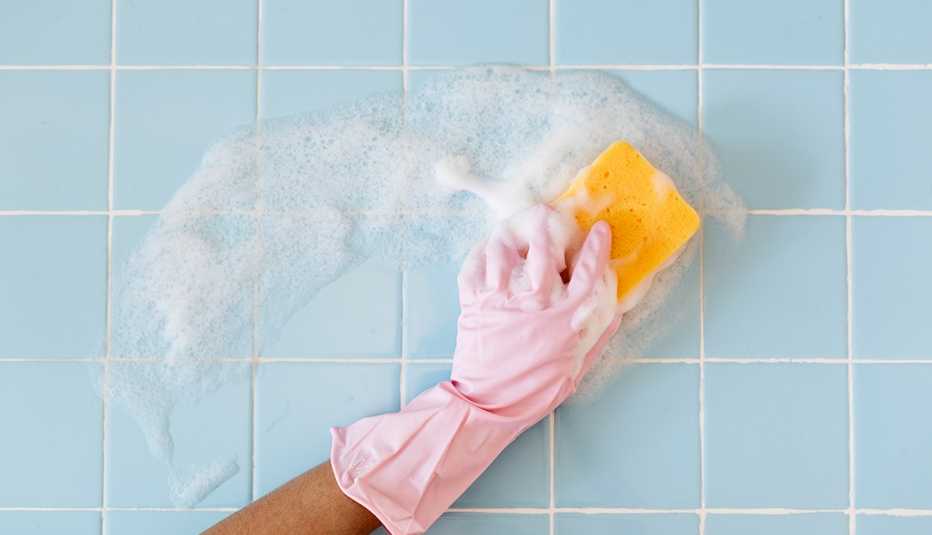

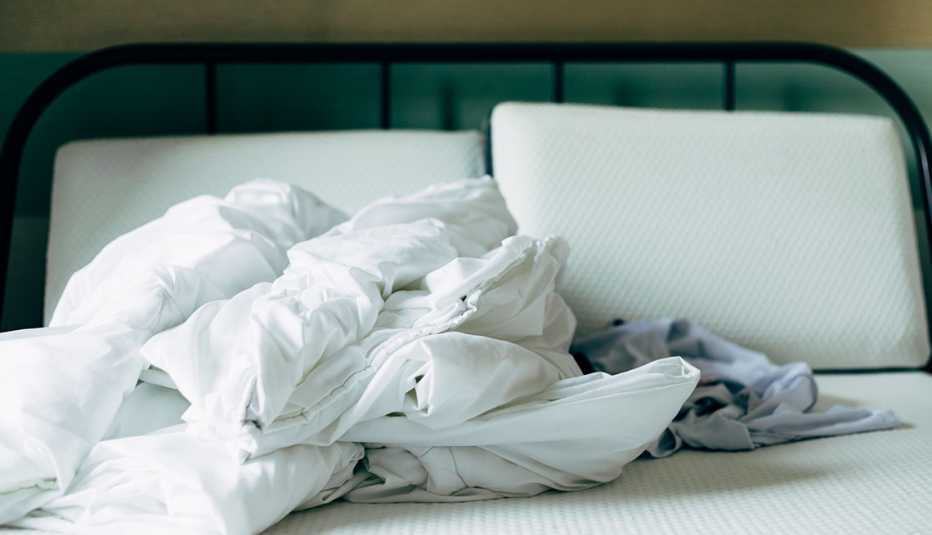
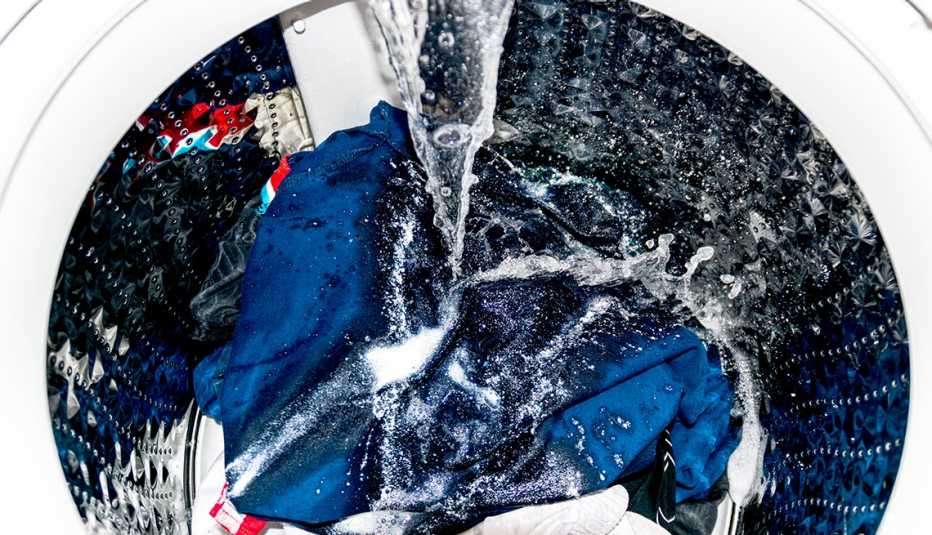


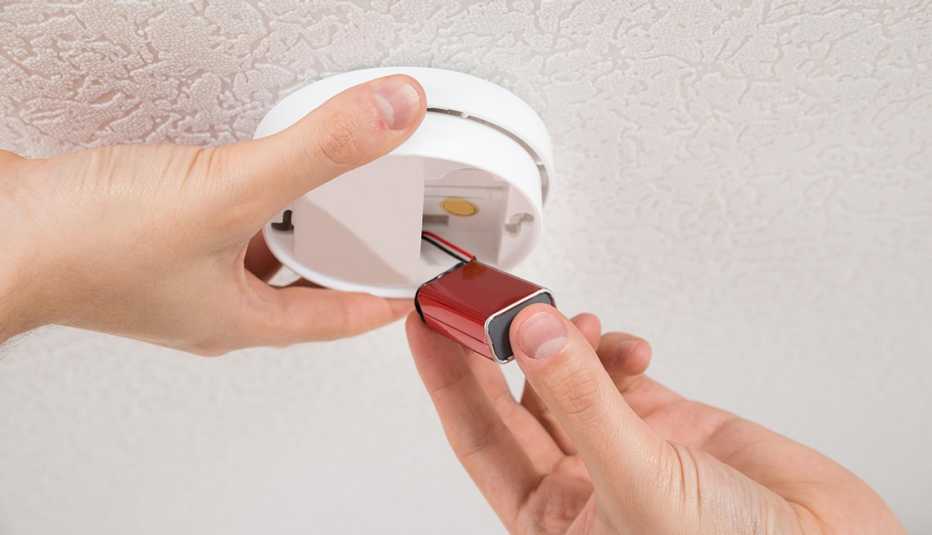

More AARP Smart Guides
Landscape Design
From picking plants to preventing pests, these tips can help you cultivate the yard of your dreams
Seasonal Allergies
Learn how to get the sneezing, sniffling and runny noses under control this season
Declutter Your Home
Follow these tips from top-notch organizers, and clear your way to a happier space
More Members Only Access